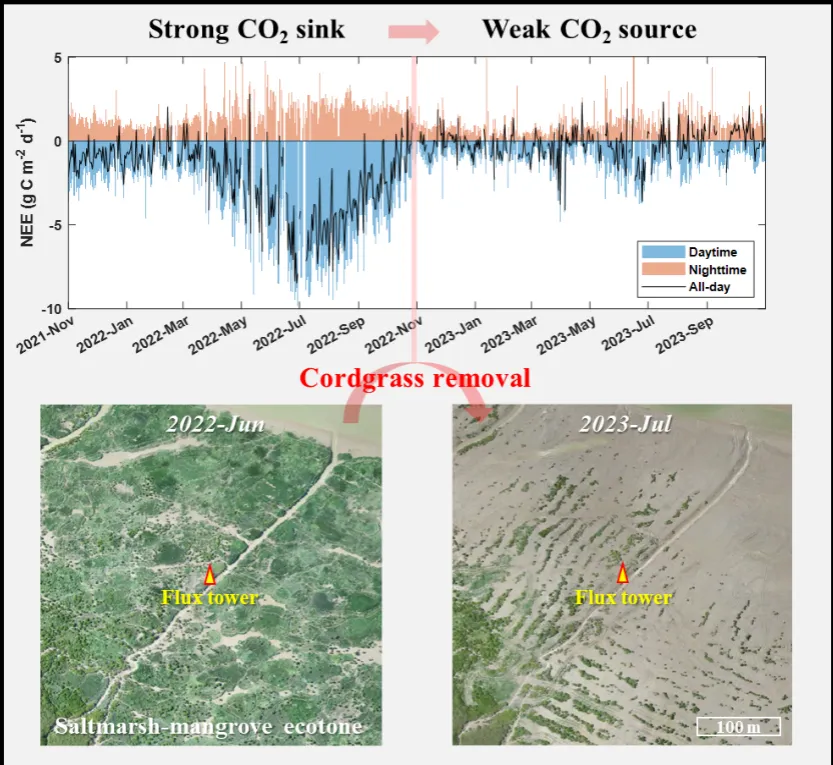Xudong Zhu*, Minghao Ma, Lichun Li, Mingjie Li
Science of The Total Environment
https://doi.org/10.1016/j.scitotenv.2024.173202.
Published: 17 May 2024
Abstract
Net ecosystem exchange (NEE) of carbon dioxide (CO2) in disturbed tidal wetlands remain less investigated, albeit the importance of these ‘blue carbon’ ecosystems in mitigating climate change has been increasingly recognized. The invasion of smooth cordgrass into China’s unvegetated tidal wetlands promotes the carbon sink, however little is known about the changes in NEE when the cordgrass is intensively removed. Here, two-year continuous eddy covariance measurements from Nov. 2021 to Oct. 2023 were used to examine how intensive cordgrass removal affects NEE in a cordgrass-dominated saltmarsh-mangrove ecotone of Southeast China. The results showed (a) this wetland acted as a monthly CO2 sink throughout the pre-removal year with nearly 90% of the annual sink (-719.7 g C m-2 yr-1 ) in the cordgrass growing season from Apr. to Oct.; (b) the cordgrass removal turned this high-sink wetland into a weak CO2 source at an annual scale (39.0 g C m-2 yr-1 ), while the change of the sink was diurnally and seasonally unequal with daytime and growing season, respectively, accounting for the majority of the reduction; (c) tidal inundation exerted inhibitive effects on the response of daytime and nighttime NEE to photosynthetically active radiation and air temperature, respectively, with the changes in all-day NEE more driven by photosynthesis than ecosystem respiration. As one of the first assessments on the impacts of cordgrass removal on NEE, this study confirms the reduction in annual CO2 sink is predominantly attributed to the cordgrass removal instead of the climatic difference. This study highlights the importance of the interactive effects among phenological, meteorological, and tidal factors in regulating the seasonality of NEE and its changes along with cordgrass removal. Future longer flux measurements with extended years are needed to complement the present assessment of the cordgrass removal-induced impacts on NEE from a longterm perspective.
